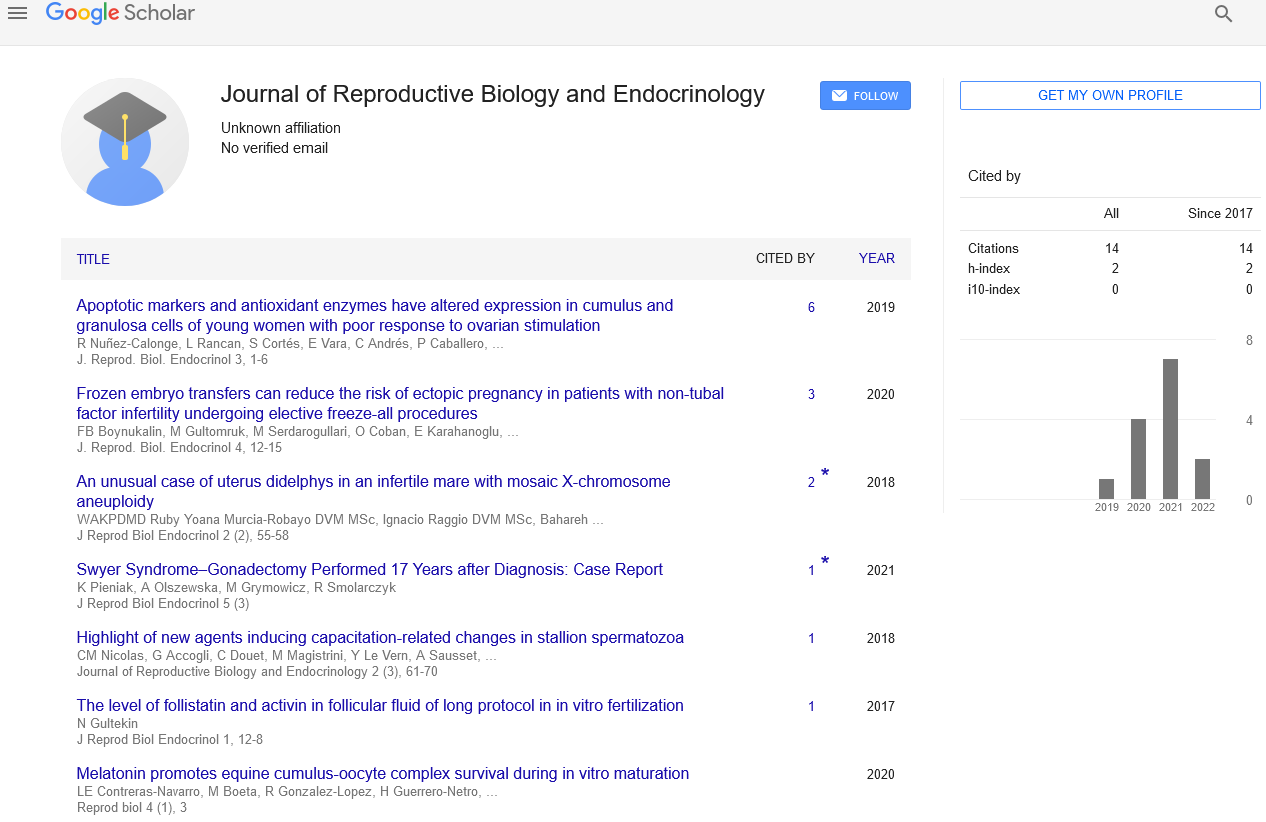A note on recurrent miscarriage
Received: 06-Jul-2021 Accepted Date: Jul 20, 2021; Published: 27-Jul-2021
Citation: Stewart Q, A note on recurrent miscarriage. J Reprod Biol Endocrinol. 2021;5(4):3
This open-access article is distributed under the terms of the Creative Commons Attribution Non-Commercial License (CC BY-NC) (http://creativecommons.org/licenses/by-nc/4.0/), which permits reuse, distribution and reproduction of the article, provided that the original work is properly cited and the reuse is restricted to noncommercial purposes. For commercial reuse, contact reprints@pulsus.com
Short Communication
Recurrent pregnancy misfortune is classically characterized as the event of three or more sequential pregnancy misfortune; be that as it may, the American Society of Regenerative Medication (ASRM) has as of late re-imagined repetitive pregnancy misfortune as two or more pregnancy misfortunes. A pregnancy misfortune is characterized as a clinically-recognized pregnancy automatically finishing some time recently 20 weeks. A clinically-recognized pregnancy implies that the pregnancy has been visualized on an ultrasound or that pregnancy tissue was recognized after a pregnancy misfortune.
Causes Recurrent Pregnancy Loss
Most pregnancy misfortunes result from chromosomal, or hereditary, anomalies, and are irregular occasions. The variation from the norm may come from the egg, the sperm, or the early developing life. Roughly 12-15% of all clinically recognized pregnancies conclusion in unsuccessful labor; in any case, it is assessed that at slightest 30-60% of all conceptions will conclusion inside the primary 12 weeks of development. Up to 50% of the time, the lady doesn’t indeed realize that she was ever pregnant. The chance of unsuccessful labor increments with the number of past pregnancy misfortunes, but is ordinarily less than 50% [1].
Progressing maternal age is related with an expanded chance of premature delivery, which is thought to be due to destitute egg quality driving to chromosomal (hereditary) variations from the norm. In some cases, the mother or father themselves may have a slight abnormality in their qualities, but the descendant may be more seriously influenced and in this way result in unsuccessful labor [2].
In some cases, there can be an anomaly within the uterus (the womb) that leads to unsuccessful labor. The unsuccessful labor may be due to destitute blood supply to the pregnancy or irritation. A few ladies may be born with an sporadically formed uterus, and a few ladies may create variations from the norm with their uterus over time [3].
A woman’s resistant framework may too play a part in repetitive pregnancy misfortune. Hormone anomalies may moreover affect pregnancy misfortune, counting thyroid infection and diabetes. Anomalies in a mother’s blood clotting may too influence pregnancy misfortune.
By and large talking, natural components, push, and word related components don’t appear to be related to pregnancy misfortune.
Psychological effects of miscarriages
There’s noteworthy, and regularly unrecognized, mental and psychiatric injury for the mother – for numerous, premature delivery speaks to the misfortune of a future child, of parenthood, and incites questions with respect to her capacity to reproduce.
There’s huge mental effect of repetitive miscarriage. Psychological back within the frame of visit talks and thoughtful counseling are significant to the effective assessment and treatment of the on edge couple. When no etiologic figure is distinguished, no treatment begun at 60% to 80% fetal rescue rate still may be anticipated. Subsequently, couples with unexplained repetitive premature delivery ought to be advertised suitable enthusiastic bolster and consolation.
REFERENCES
- 1. Jeve YB, Davies W. Evidence-based management of recurrent miscarriages. J Hum Reprod Sci. 2014;7:159-69.
- 2. Sugiura-Ogasawara M, Ozaki Y. Abnormal embryonic karyotype is the most frequent cause of recurrent miscarriage. Hum Reprod Sci. 2012;7:2297-03.
- 3. Branch DW, Gibson M, Silver RM. Clinical practice Recurrent miscarriage. NEJM. 2010;363:1740-7.





